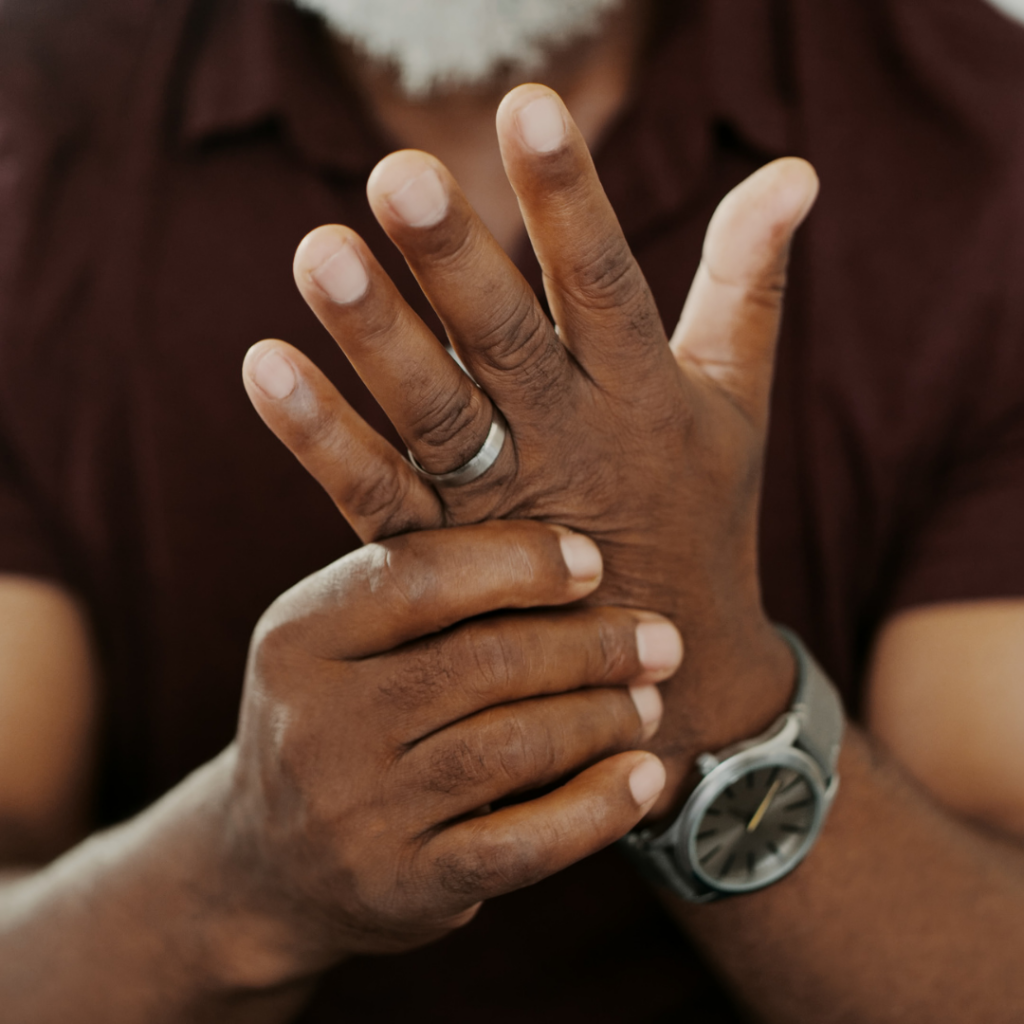Arthritis affects millions of people each day and can come in many forms. Often time arthritis may become present with age or may be caused by an inflammatory disease that attacks your joints and tissues. Arthritis doesn’t discriminate in age and can affect anyone, from adolescents to older adults.
Because arthritis can be a debilitating condition and keep you from living an active life, I want to give you an overview of what arthritis is, its signs and symptoms, and ways to treat it. I will also address ways that may help reduce and prevent arthritis symptoms from becoming severe in the future, allowing you to live a life without symptoms and pain.
What is arthritis?
The definition of arthritis is,
- Rheumatoid arthritis happens when the body’s defense system doesn’t work correctly. It affects joints and bones (often of the hands and feet) and may also affect internal organs and systems. You may feel sick or tired, and you may have a fever.
- Osteoarthritis– usually comes with age and most often affects the fingers, knees, and hips. Sometimes osteoarthritis follows a joint injury. For example, you might have badly injured your knee when young and develop arthritis in your knee years later.
The most common signs and symptoms of arthritis involve the joints. Depending on the type of arthritis, signs and symptoms may include:
- Pain
- Stiffness
- Swelling
- Redness
- Decreased range of motion
Diagnosis
If you start having any of the above symptoms, it may be time to talk to your doctor and see if arthritis could be causing these symptoms.
Diagnosis includes:
Analyzing different types of bodily fluid can help determine what kind of arthritis you may have.
These fluids include blood, urine, and joint fluid.
Another form of testing is through imaging. These include:
X-Ray-Using low levels of radiation to visualize bone, X-rays can show cartilage loss, bone damage, and bone spurs.
CT Scanners- take X-rays from different angles and combine the information to create cross-sectional views of internal structures. CTs can visualize both bone and the surrounding soft tissues.
Ultrasound. This technology uses high-frequency sound waves to image soft tissues, cartilage, and fluid-containing structures near the joints (bursae). Ultrasound is also used to guide needle placement for removing joint fluid or injecting medications into the joint.
Magnetic resonance imaging (MRI). Combining radio waves with a strong magnetic field, MRIs can produce more-detailed cross-sectional images of soft tissues such as cartilage, tendons, and ligaments.
Treatments
There are many forms of treatment that I use to help patients who are suffering from Arthritis. These treatments include:
Physical Therapy- helps the body move and can help when a person has a limited range of movement. Moving the body helps to lubricate the joints and strengthen the muscles and surrounding joints.
Medications- Anti-inflammatory medications such as NSAIDs help reduce pain and lower inflammation. Steroids are another option that helps to reduce inflammation and slow joint damage.
Diet and Lifestyle- choosing to follow an anti-inflammatory diet will help to reduce any unnecessary inflammation in the body and prevent further damage.
Prevention
Prevention is tricky when it comes to arthritis because sometimes arthritis is genetic, and you’re predisposed to it. You can do things to protect your body and reduce the risk of developing arthritis.
Take care of your joints- moving daily in a low-impact way will help to reduce the risk of damaging your joints and tissues. Activities like swimming, biking, yoga, pilates, and lightweight training are all activities that will keep your joints and muscles healthy and strong.
Stretch- Stretching before and after movement will help to keep your joints and ligaments limber and your range of motion intact. Yoga is a great way to help stretch the muscles and can be done in as little as 10-20 minutes a day.
Diet and Lifestyle- Reduce your intake of sugar and processed foods. Choosing anti-inflammatory foods will help reduce inflammation in the body and may reduce your chances of developing arthritis. Focus on foods that are whole and have high nutritional value. Things like:
- fruits and vegetables
- lean meats
- whole grains
- legumes
- wild-caught fish
Another way of preventing arthritis or limiting its symptoms is with a food and allergy test. Finding out what foods and ingredients you may be allergic to and avoiding them can significantly reduce and improve inflammation in the body. Another one is sleep and stress. Stress causes a lot of inflammation in the body. Managing stress through yoga, meditation, and breathwork may help reduce symptoms.
Finally
Sometimes you can’t prevent arthritis from developing in the body, but you can do things to help reduce your symptoms and the severity of damage in the joints.
Along with the proper treatment and following a healthy lifestyle, you may be able to live an active life.
If you’re experiencing any of the symptoms listed above, reach out to your general practitioner or me to schedule an exam.
Here’s to great health and less pain,
Dr. Goyle

